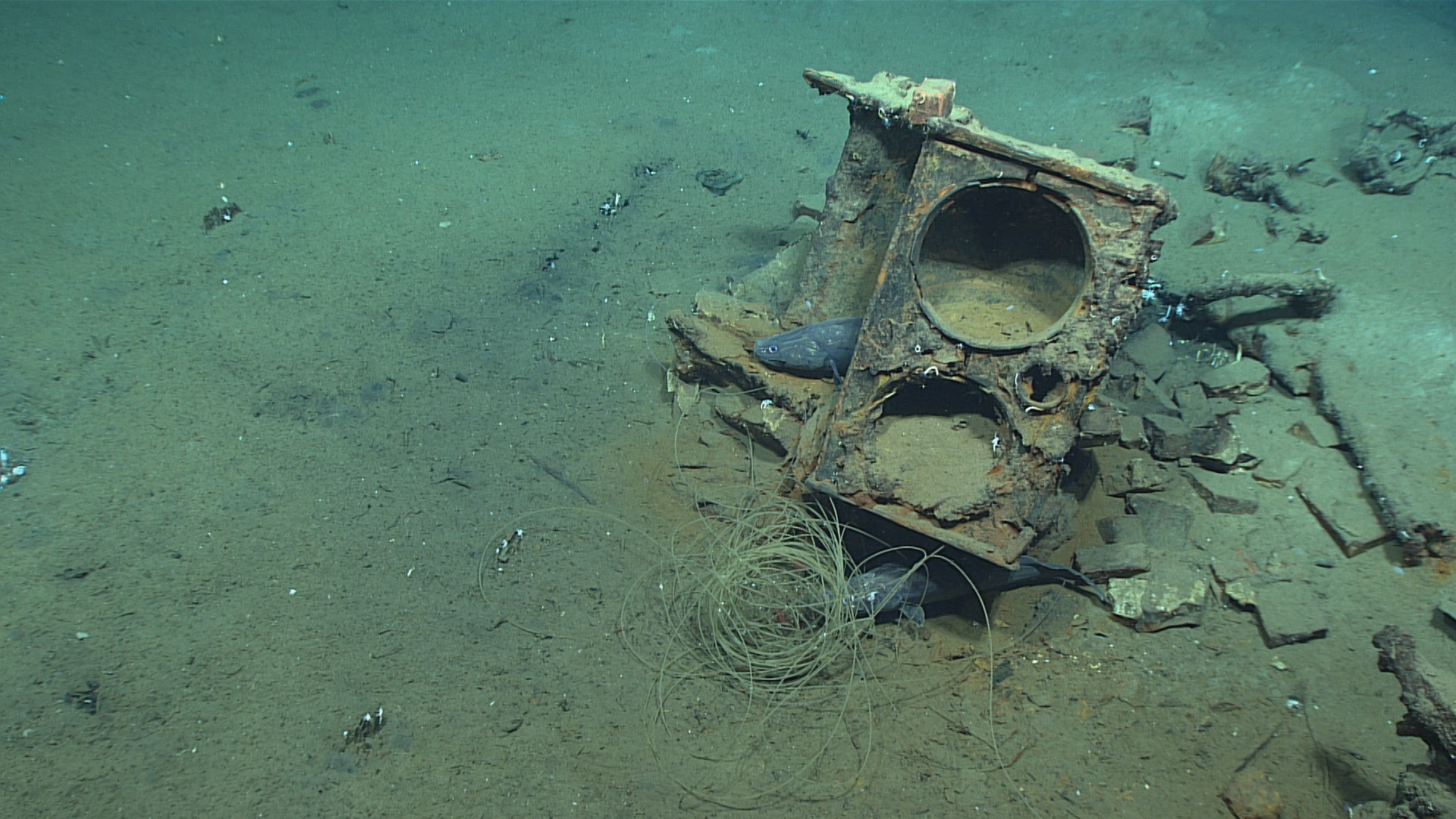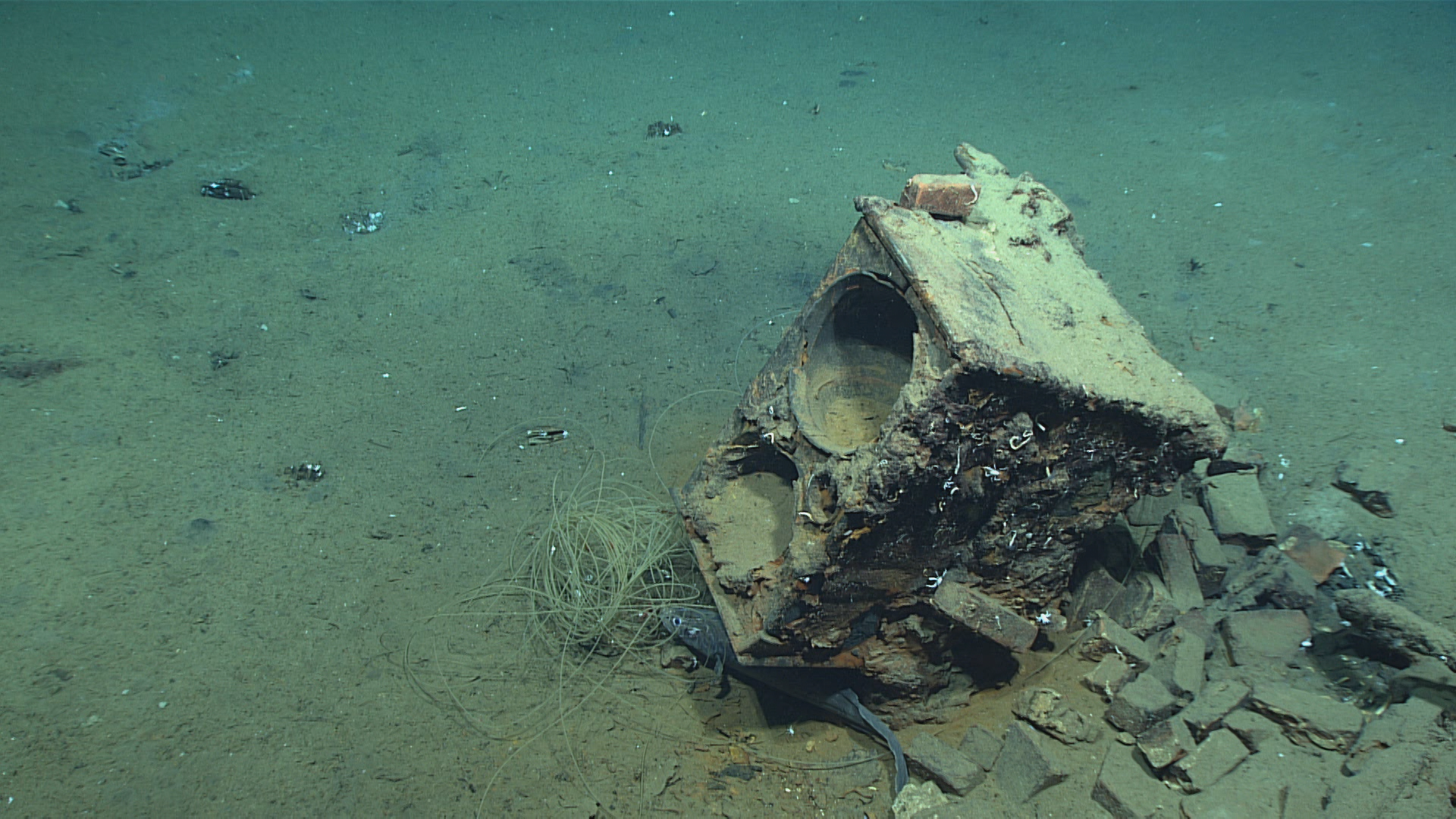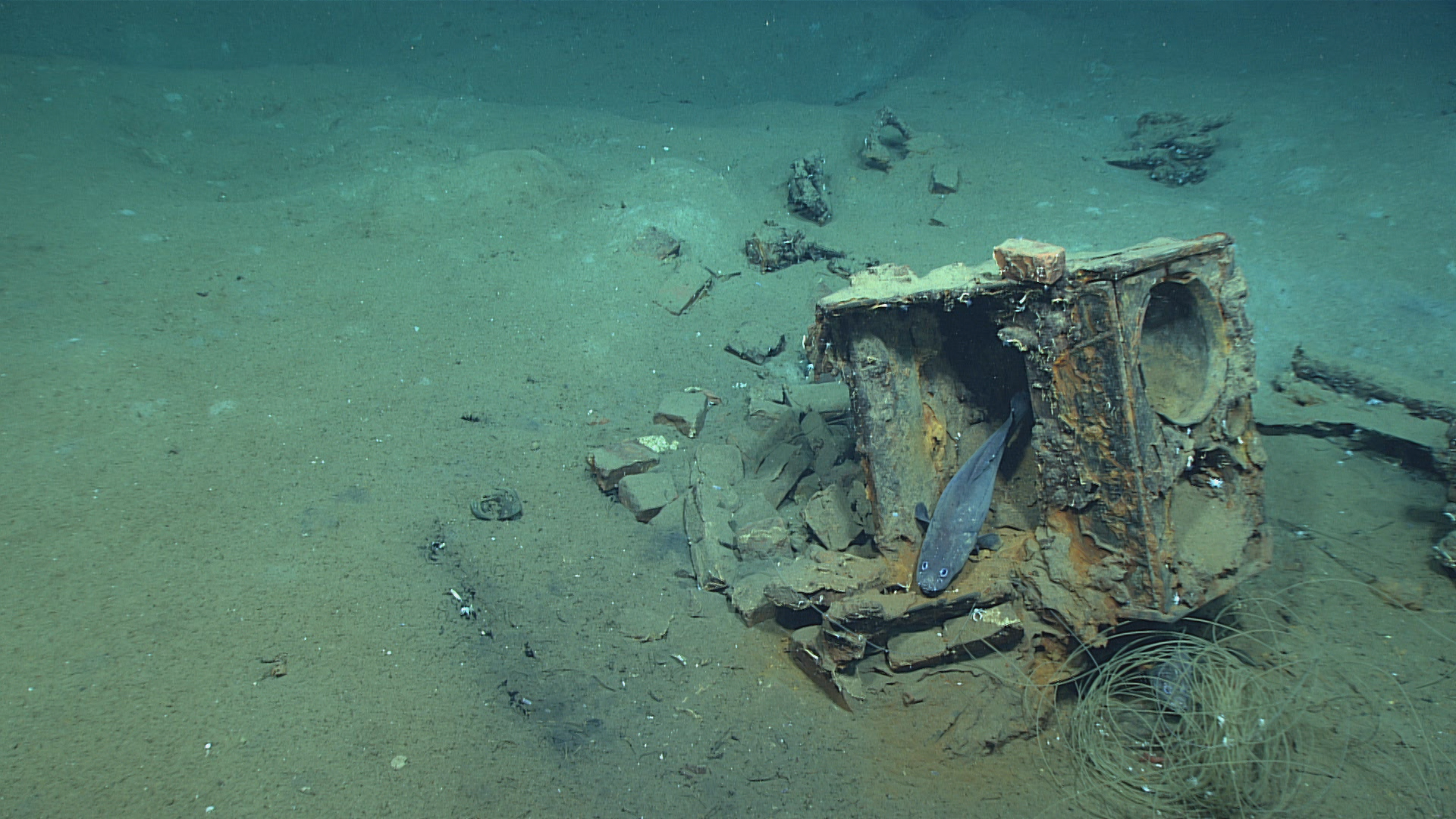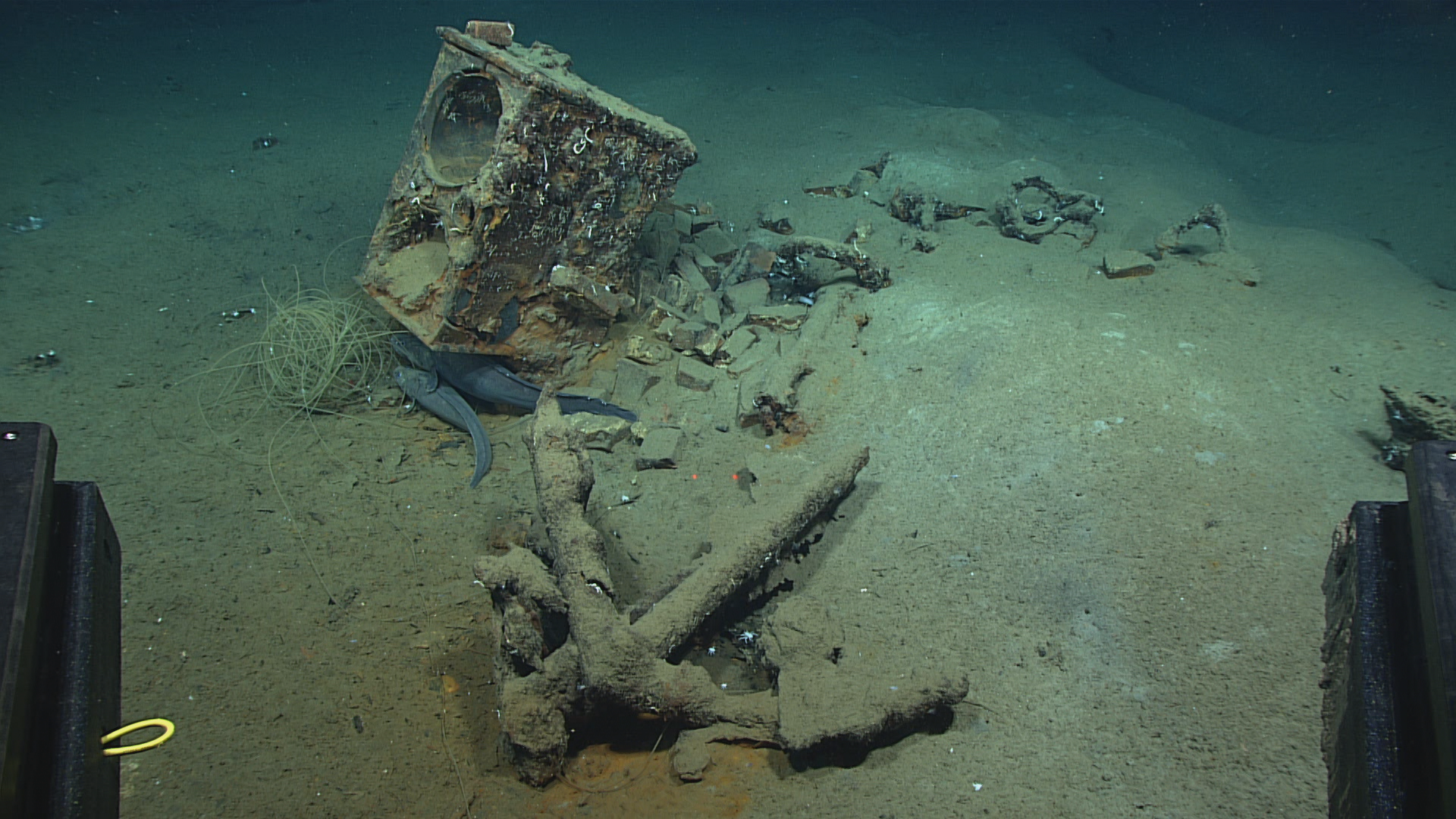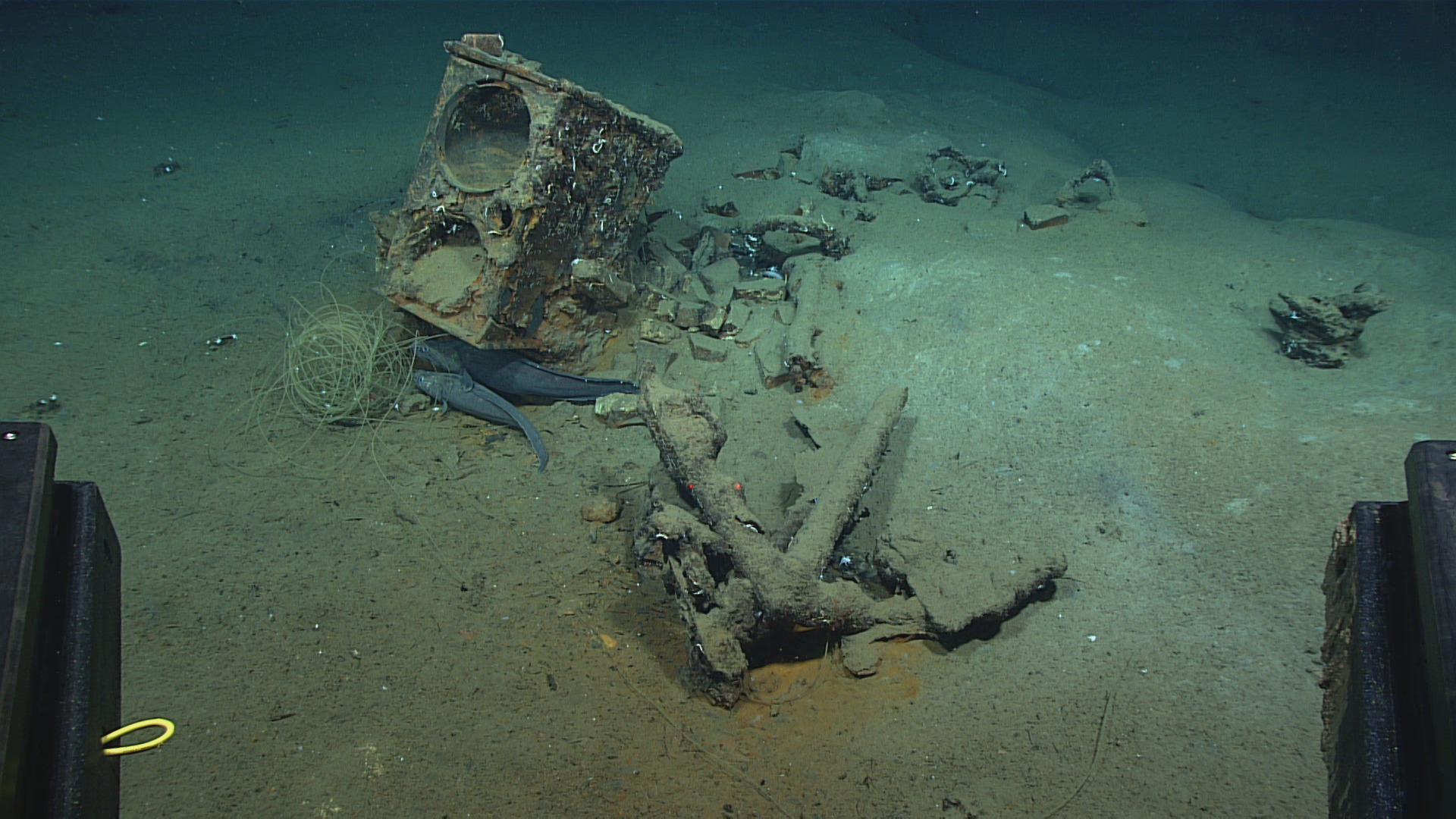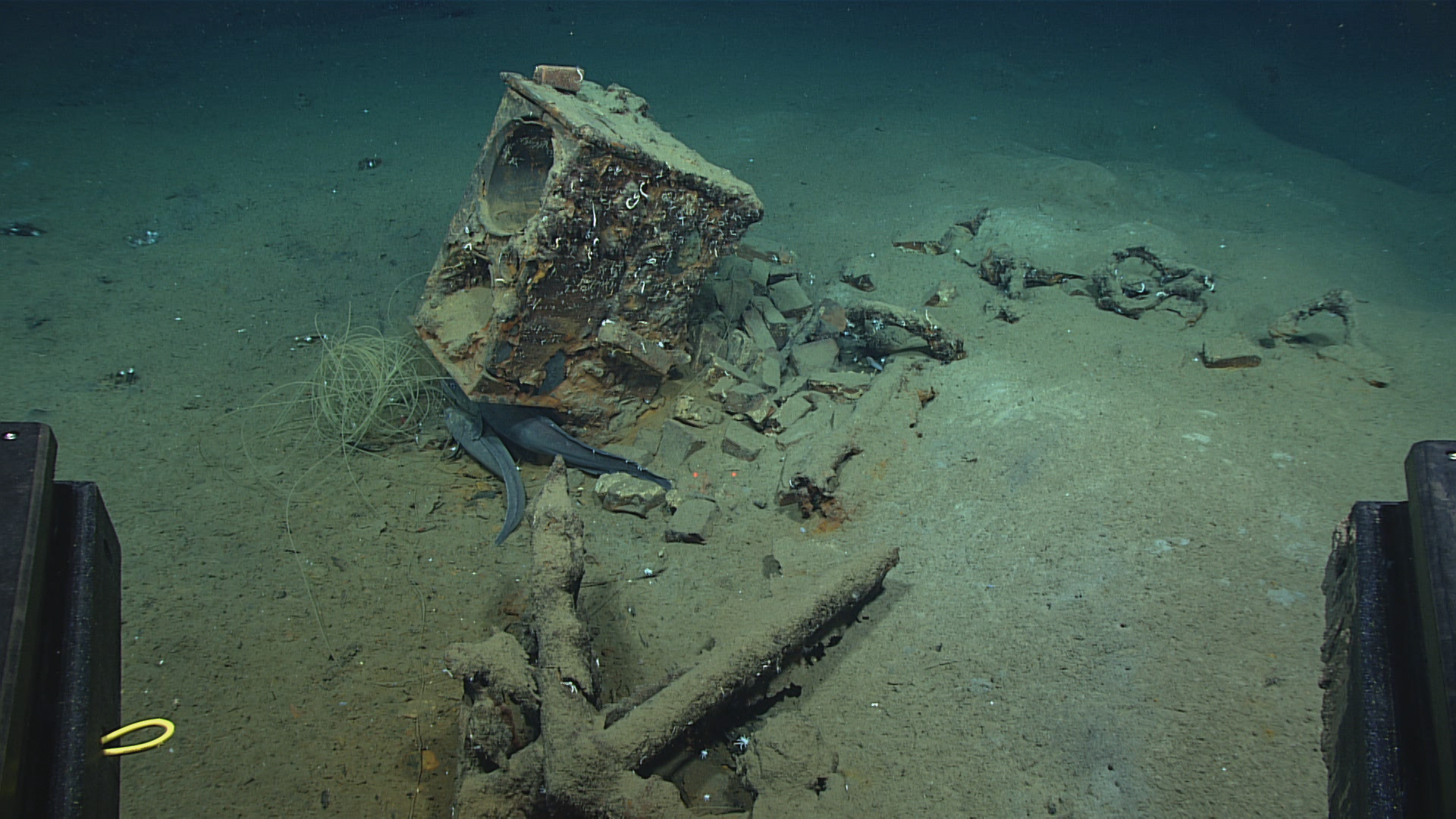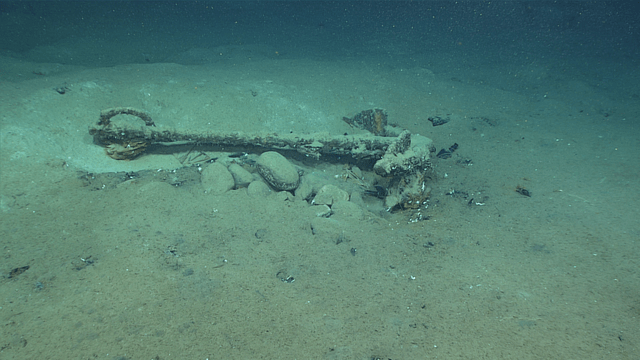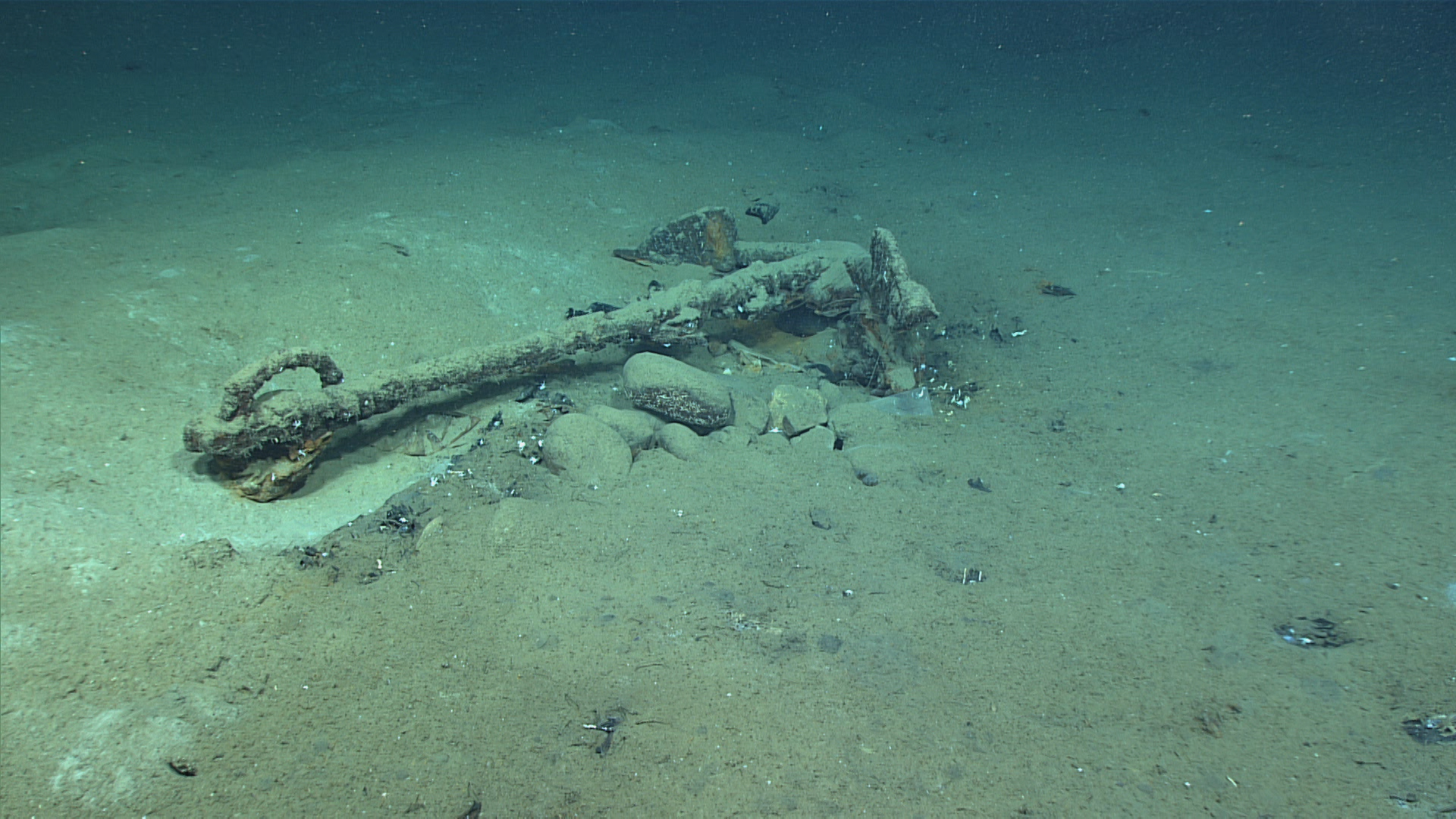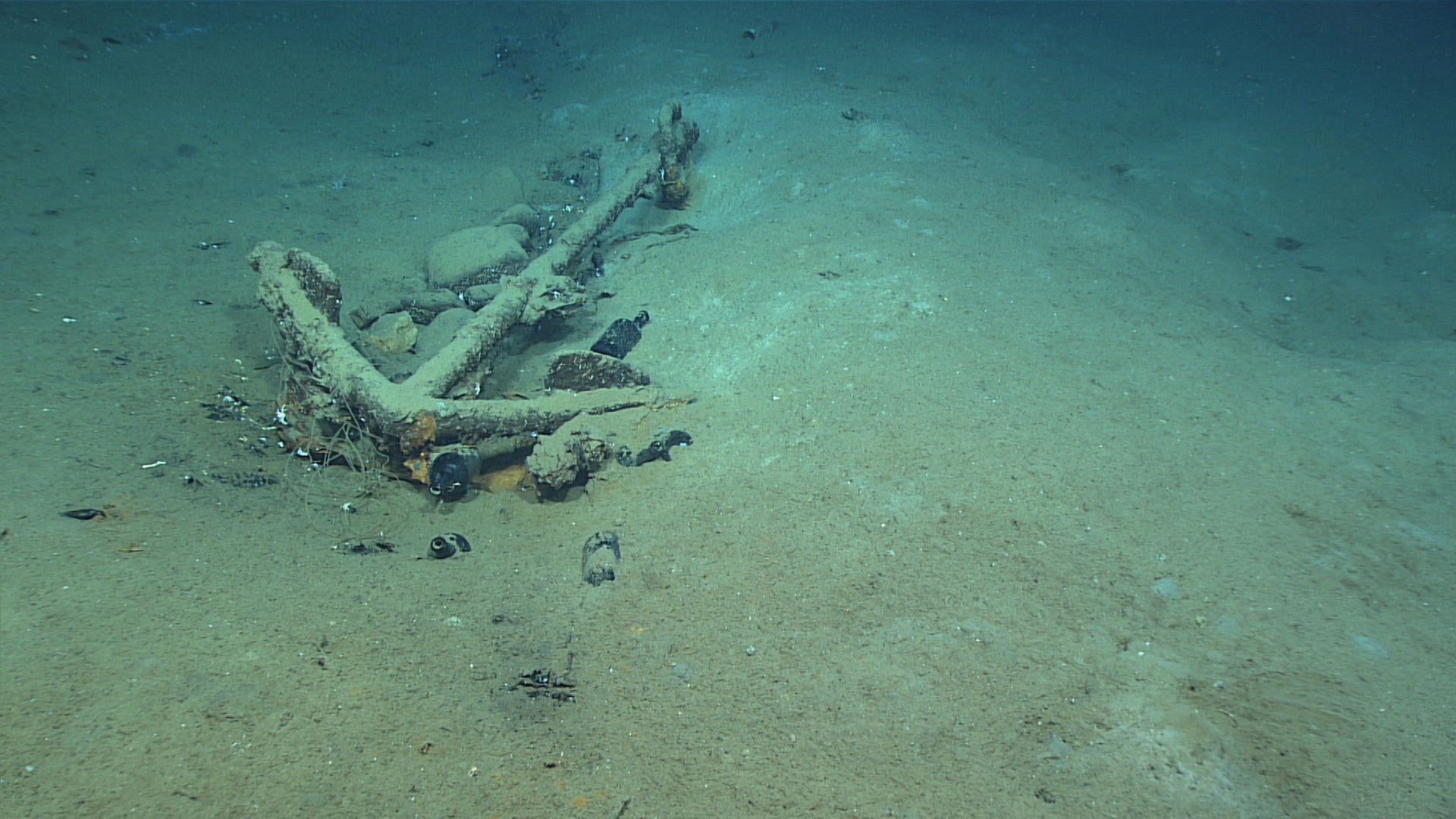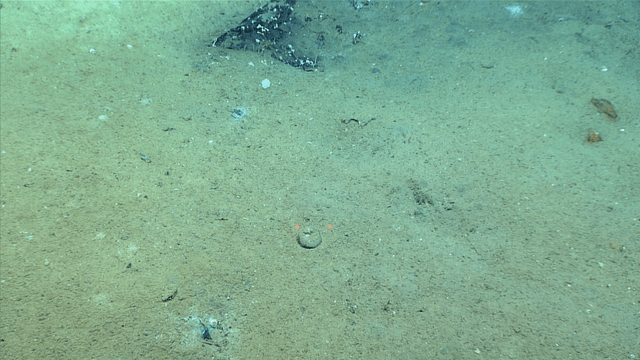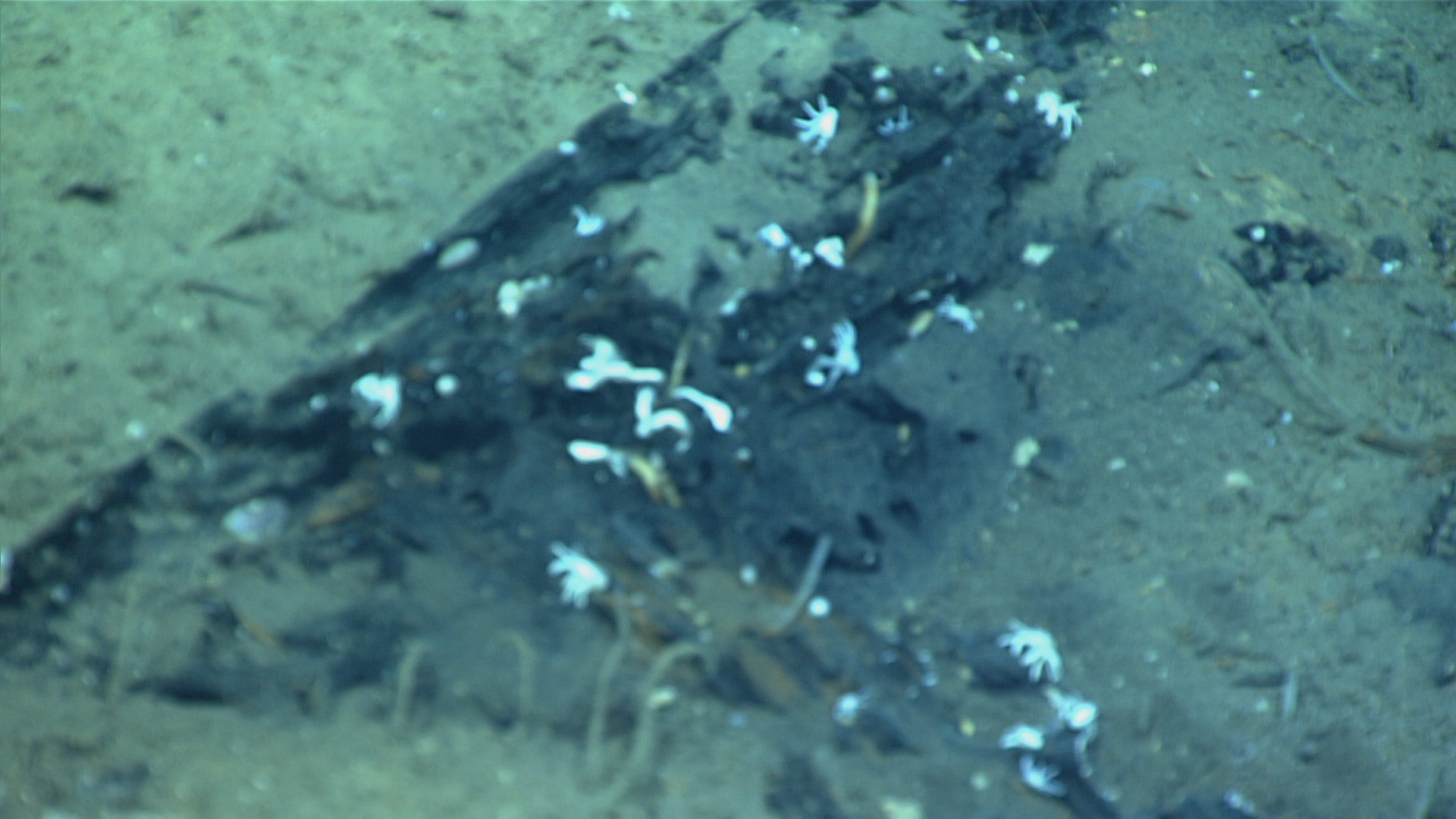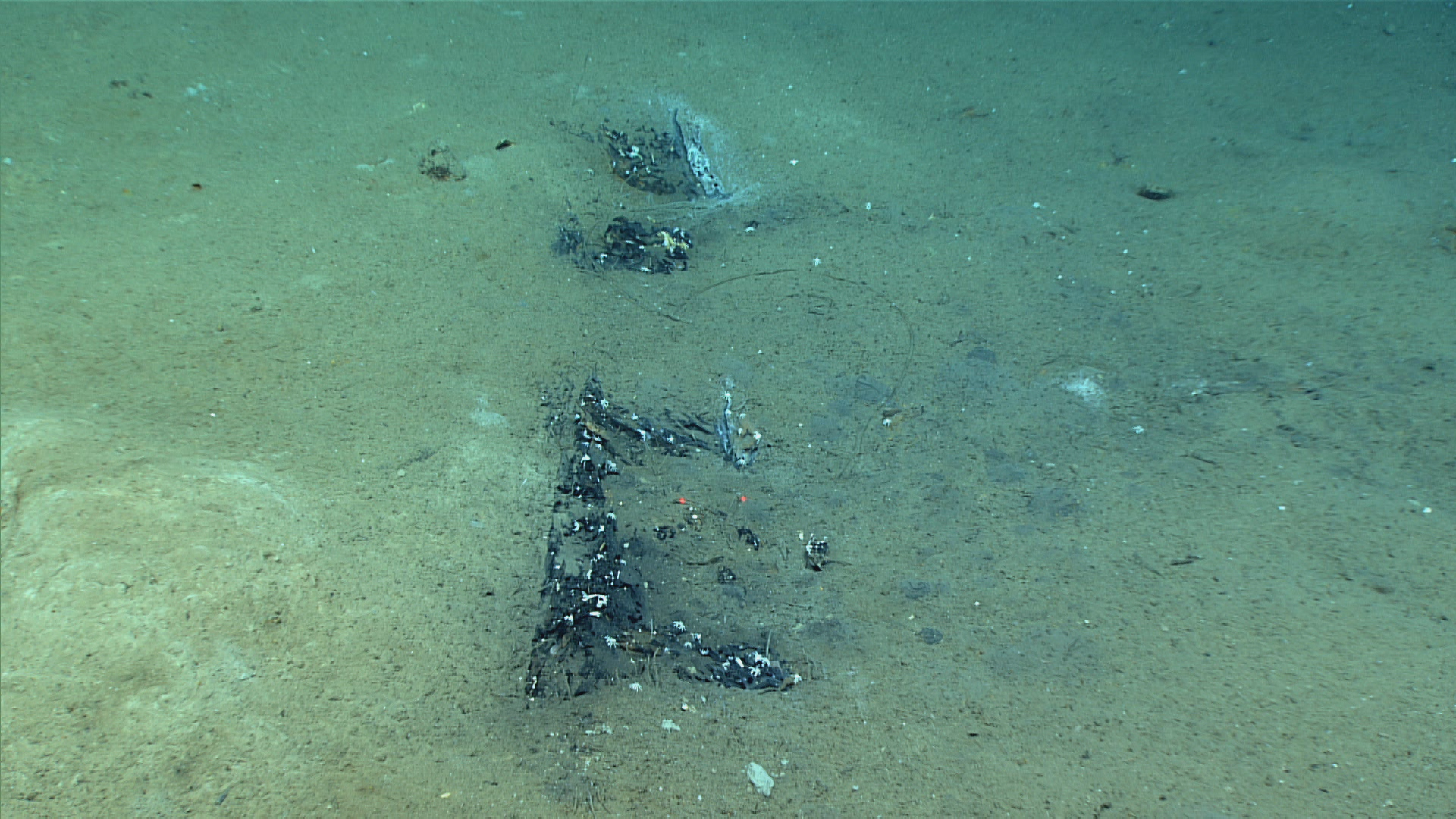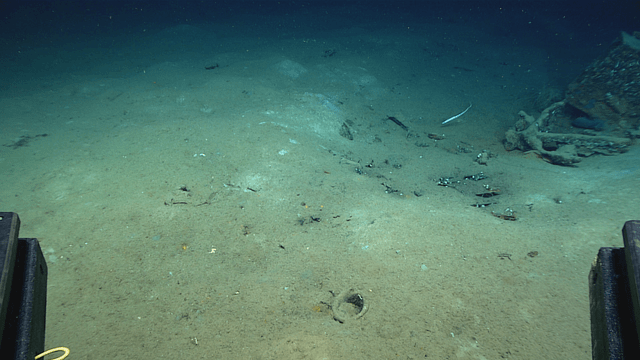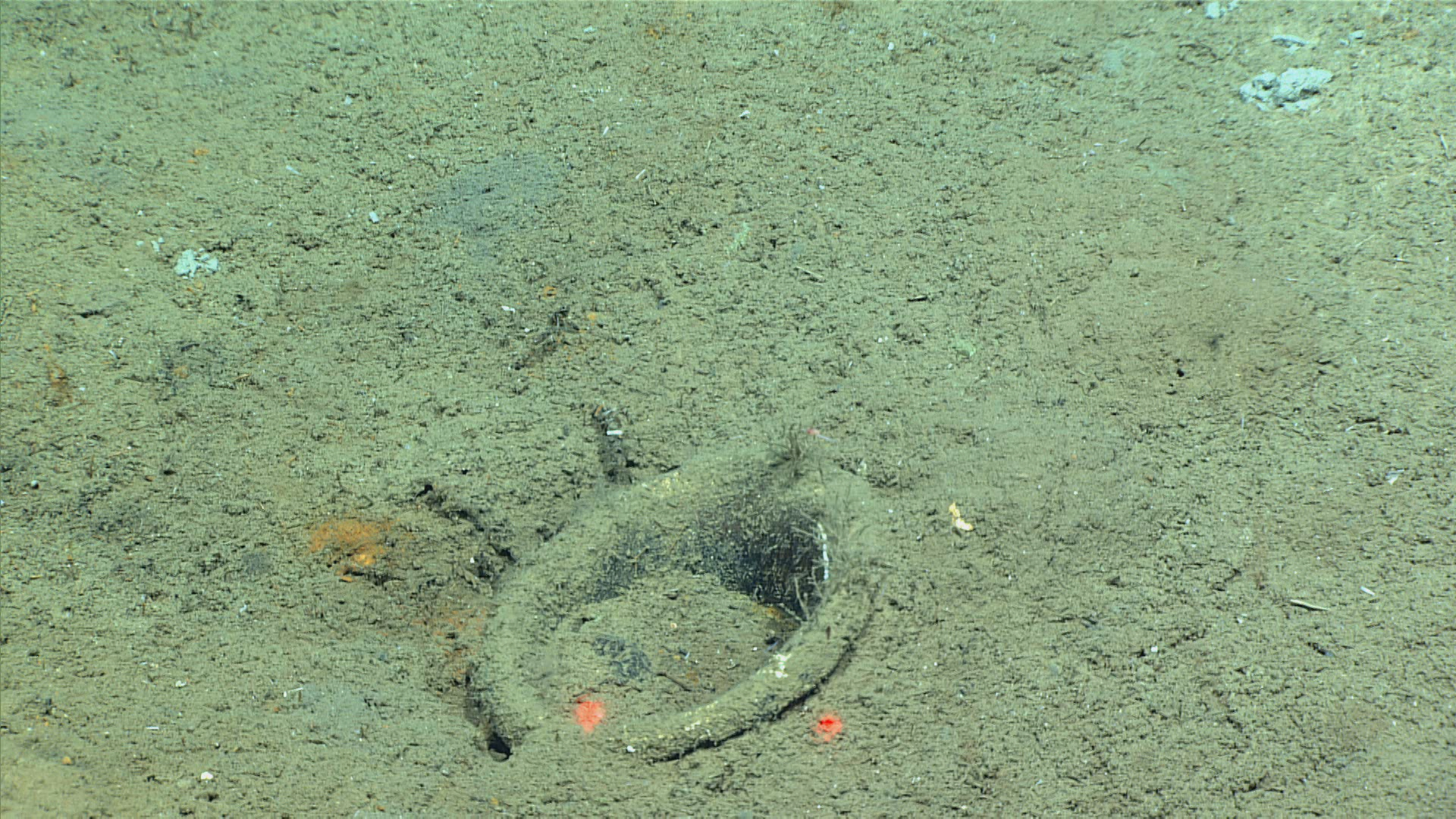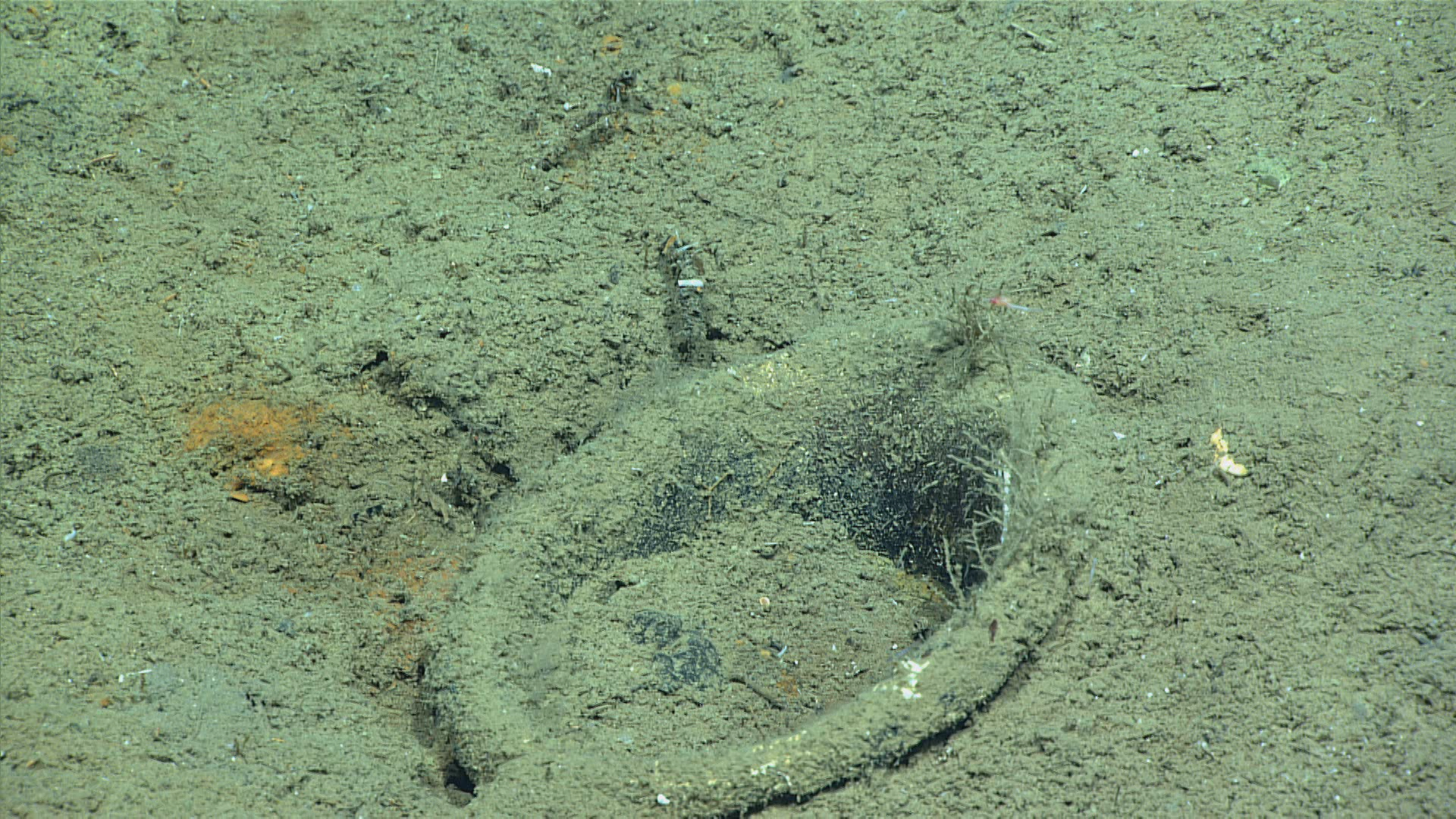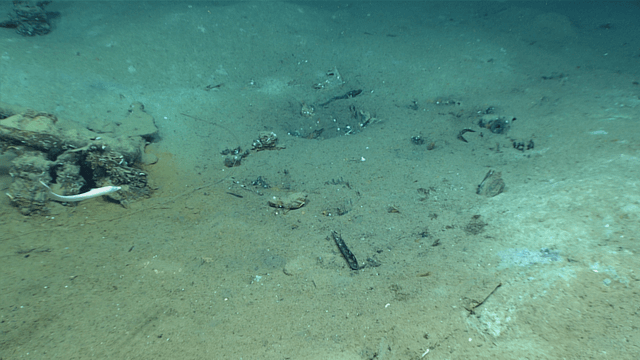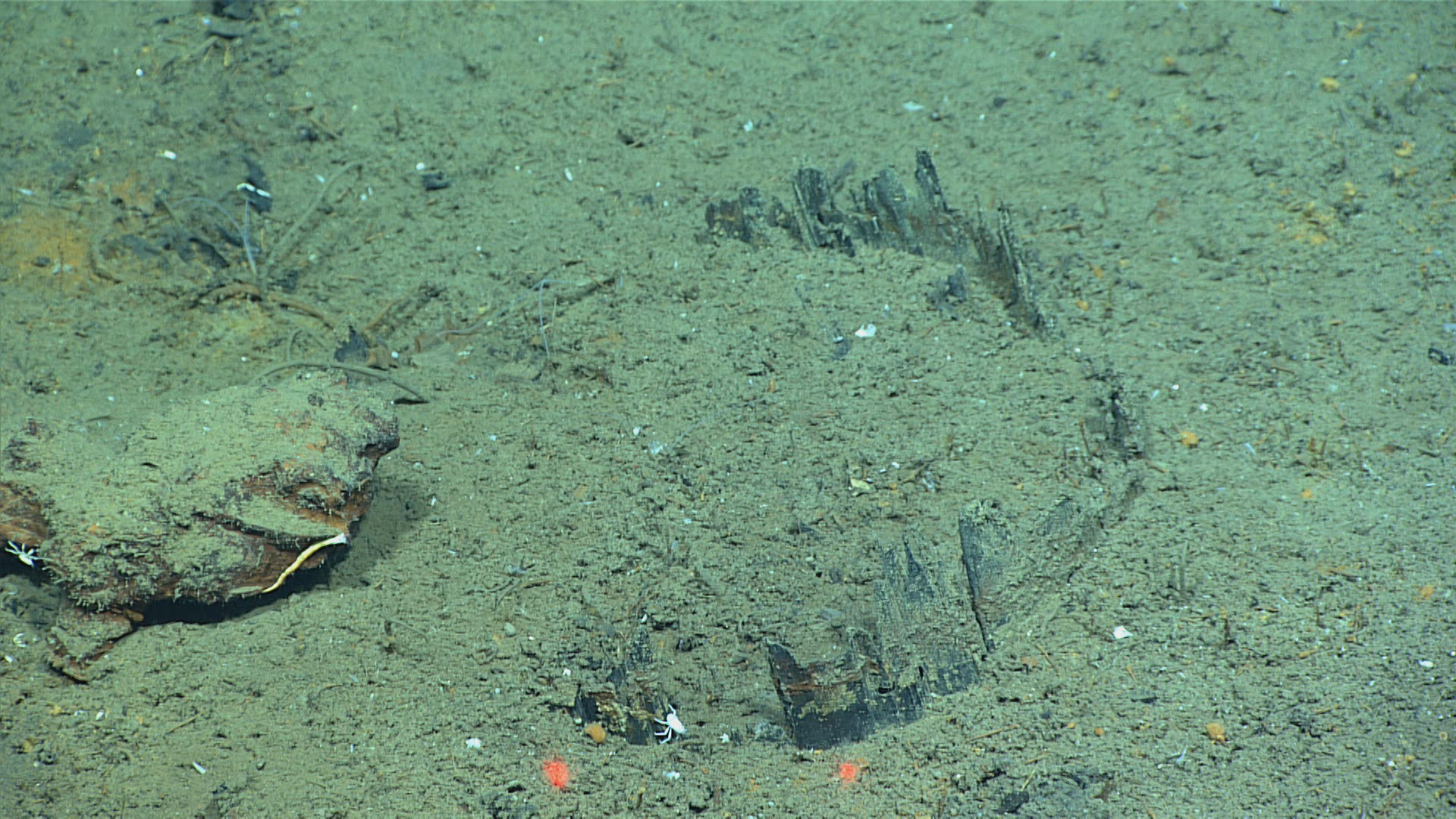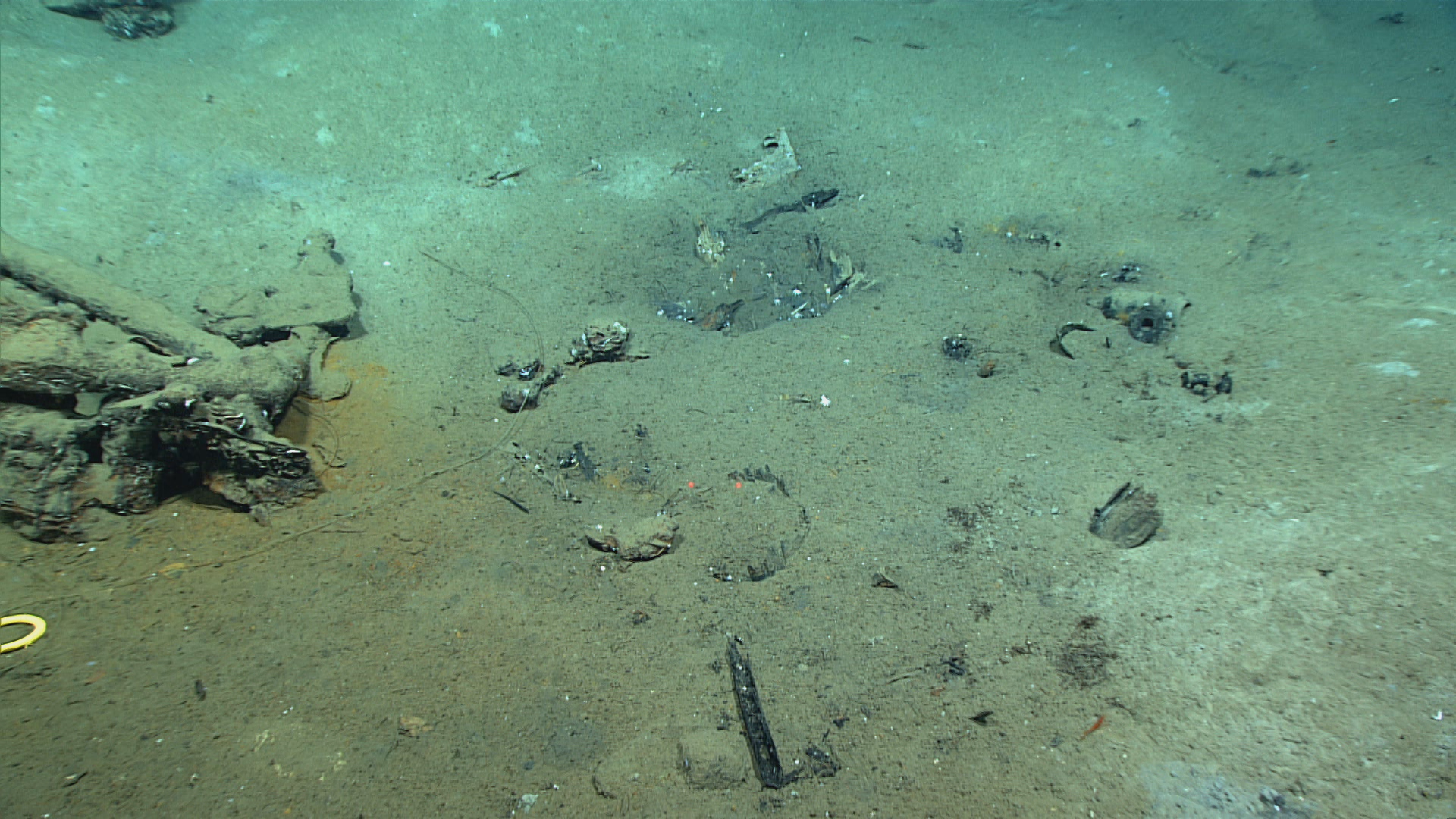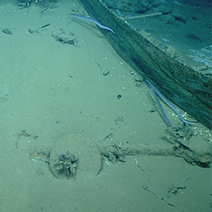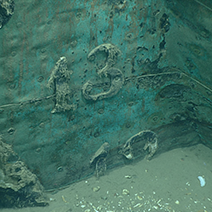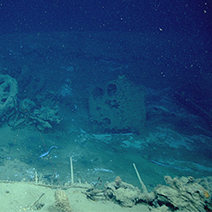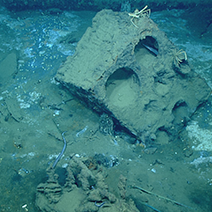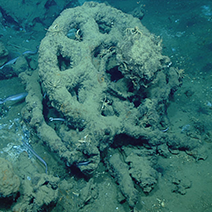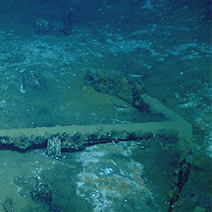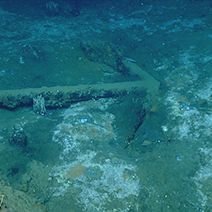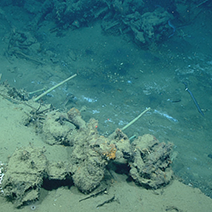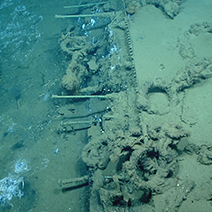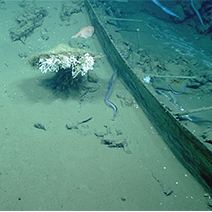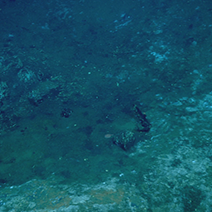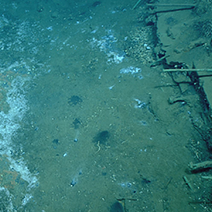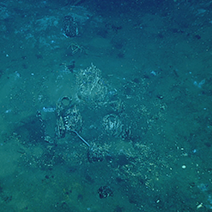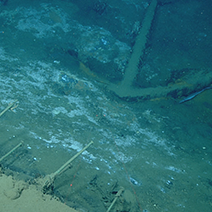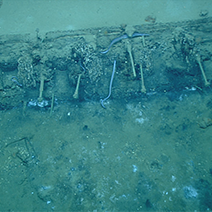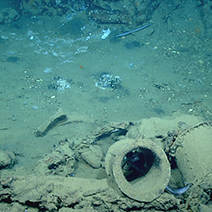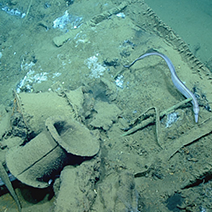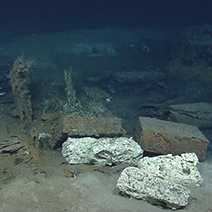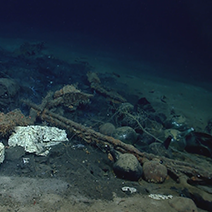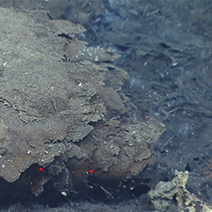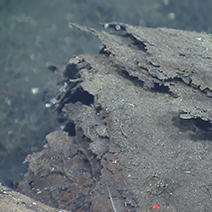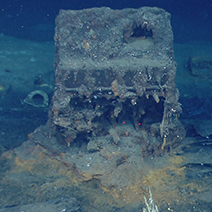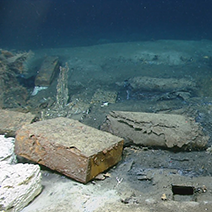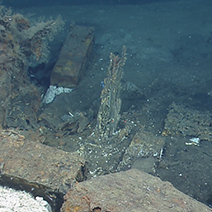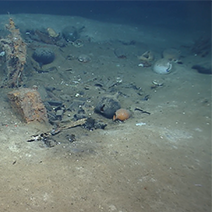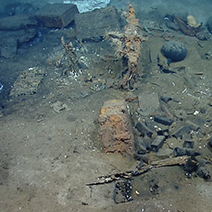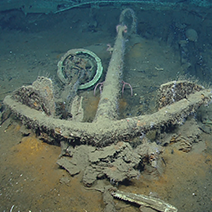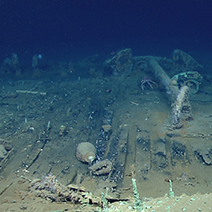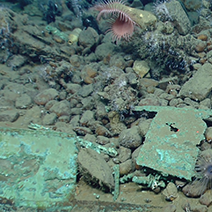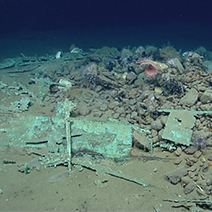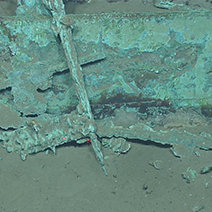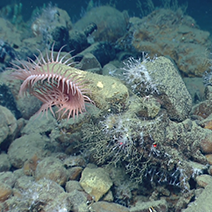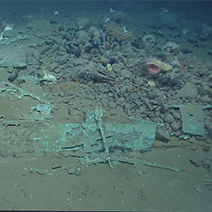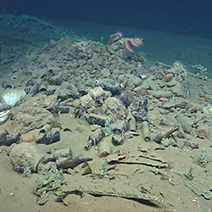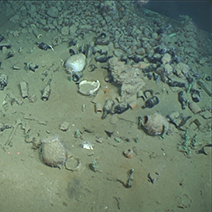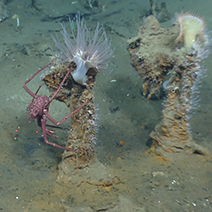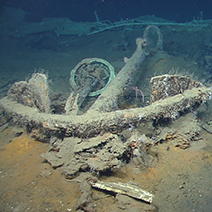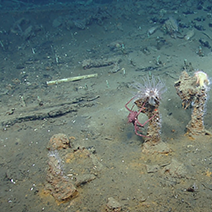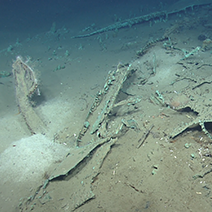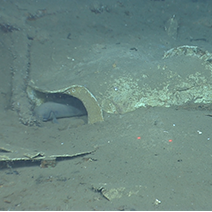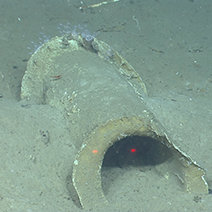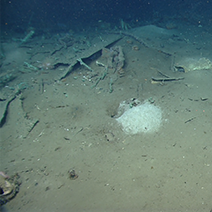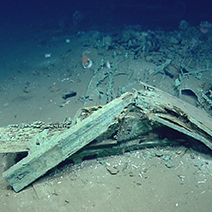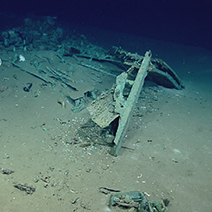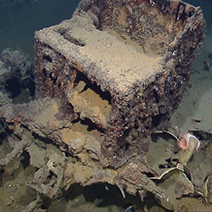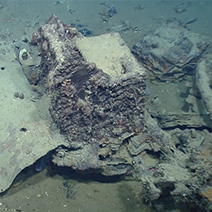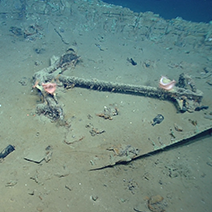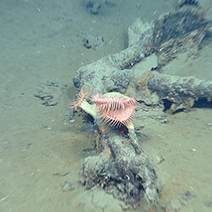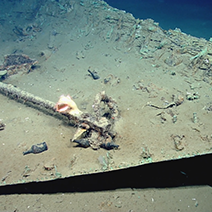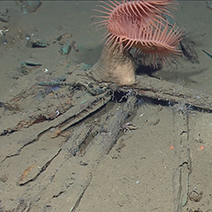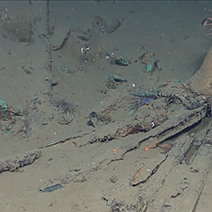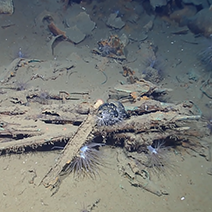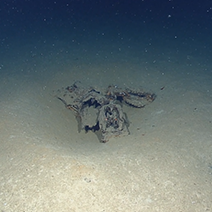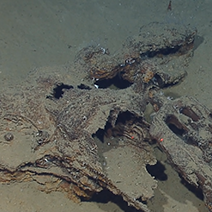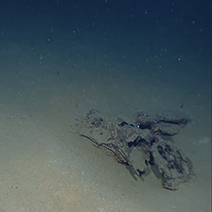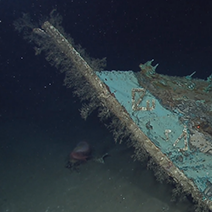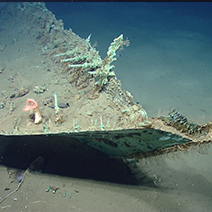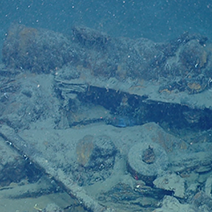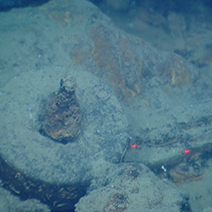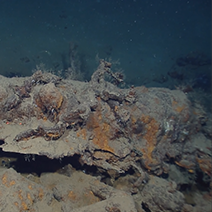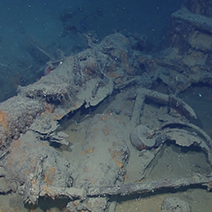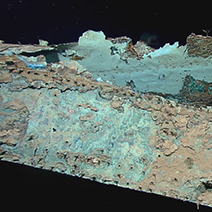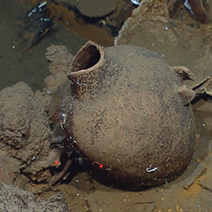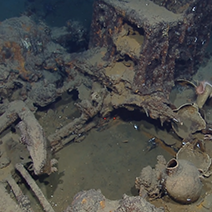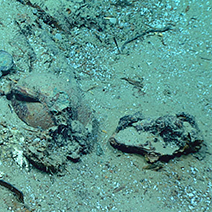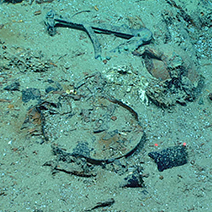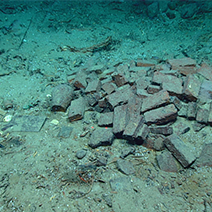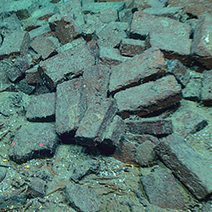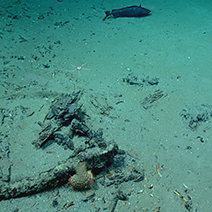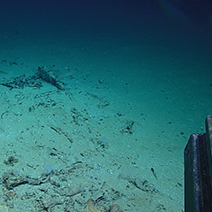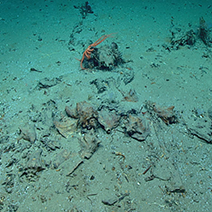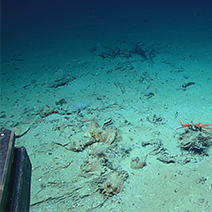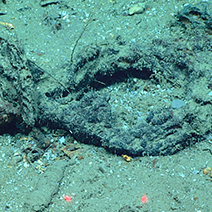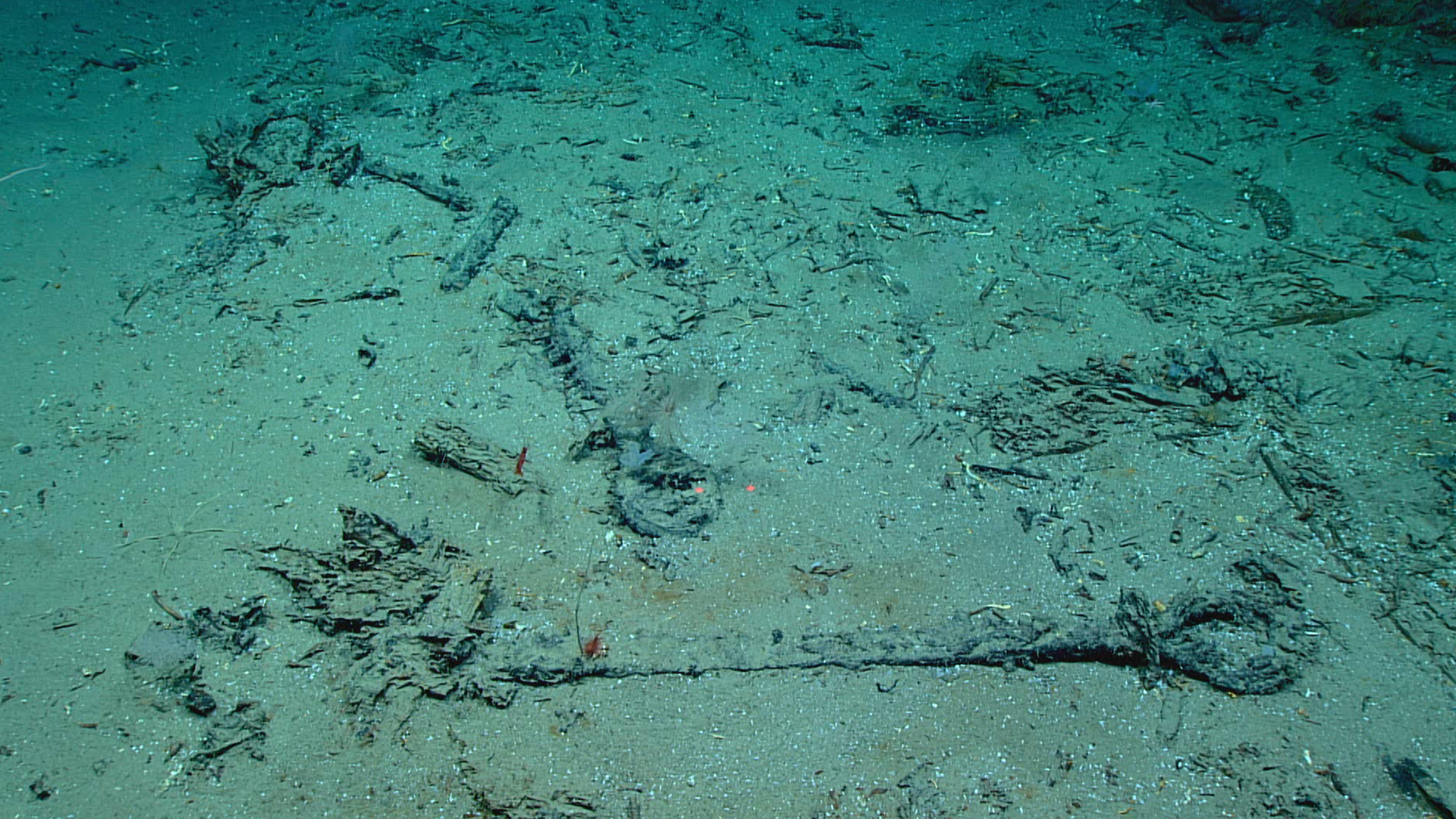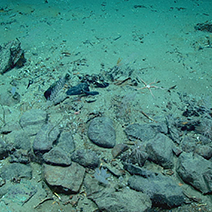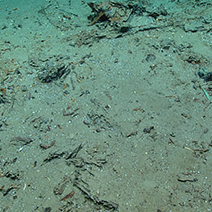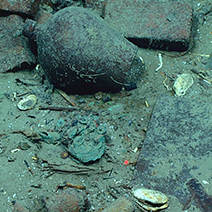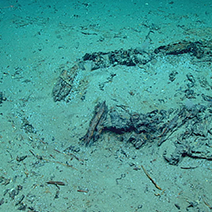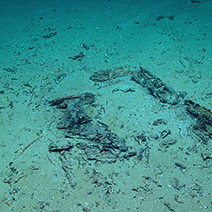BOEM: DEEP DISCOVERIES
In the course of oil and gas exploration, BOEM has discovered many amazing shipwrecks. Each shipwreck tells a story of our shared history and provides a mystery to uncover. BOEM would like to share these mysteries with you by providing access to new 3D modeling never before possible using video publicly available from NOAA's Office of Ocean Exploration and Research.
- Please visit our series of short videos about important shipwreck sites in the Gulf of Mexico.
- Read more Gulf Of Mexico Archaeological Information
Featured Shipwrecks
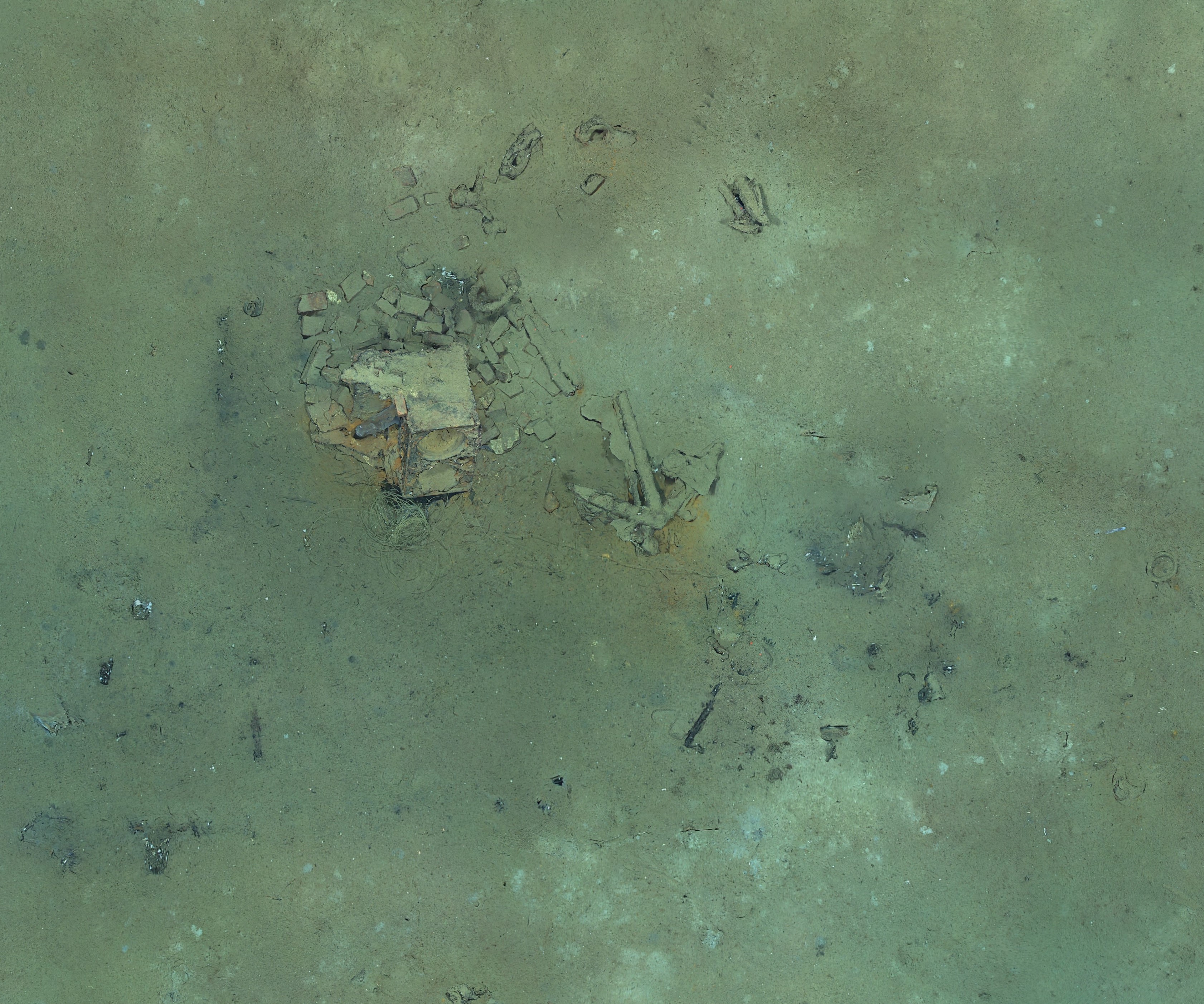
15563 Shipwreck Shipwreck 15563 likely dates to the first half of the 19th century. The evidence suggests this was a two masted schooner or a brig. It was most likely a cargo vessel of some sort that now rests in 6,000 feet (1829 meters) in the Gulf of Mexico. The site's most prominent feature is its stove that features the name G&W Ashbridge.
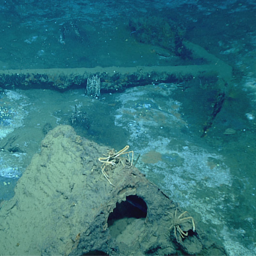
15377 ShipwreckWith its wooden hull sheathed in copper sheets as protection against marine organisms and three towering masts carrying full sail, this large 100-foot long ship would have been a magnificent sight before it met its tragic end sometime around the middle of the 19th century in the Gulf of Mexico.
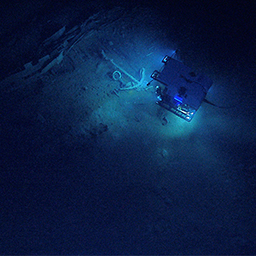
Monterrey C Shipwreck The largest of the three “Monterrey” shipwrecks that sank near each other. These wrecks lay almost 200 miles from land and maybe sank during the same storm. Monterrey C was by far the most damaged from hitting the seafloor and came to rest in over 4,000 feet of seawater.

Monterrey A Shipwreck The wreck of a wooden-hulled and copper-sheathed sailing ship that sank in over 4,000 feet of water some 200 years ago. The vessel carries at least 5 cannon and crates of muskets. Its mission remains a mystery. Was this a pirate, a privateer, a military ship, or a heavily defended merchant?
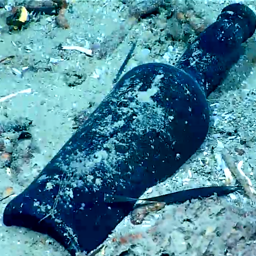
Blake Ridge Shipwreck Located over 130 miles off the coast of North Carolina in over 7,000 feet of water, the “Blake Ridge Wreck," whose real name remains a mystery, was likely a fishing vessel caught at sea in a storm in the early part of the early 19th century.

Monterrey B Shipwreck Monterrey B sank carrying a cargo of hides and large, white blocks of something we can’t identify. They could be tallow (fat from cattle) used for making candles, a tree sap called copal used in varnish, or even natural rubber. What else could they be? Pottery on the ship hints that the ship may have come from Mexico.
x
This is the first model of the high-resolution photogrammetry passes from Deep Discoverer (D2) remotely operated vehicle (ROV) on the Research Vessel Okeanos Explorer. These data were from NOAA Cruise EX2201 Dive 02. Much credit goes to the skillful ROV pilots on the Okeanos. Protocols for data collection and processing by BOEM’s Marine Archaeologist Scott Sorset.
This is the first model of the high-resolution photogrammetry passes from Deep Discoverer (D2) on Okeanos Explorer EX1711 Dive 07. Much credit goes to the skillful Remotely Operated Vehicle (ROV) pilots on the Okeanos Explorer. Protocols for data collection and processing by BOEM's Marine Archaeologist Scott Sorset.
This is the model of the Monterrey B Shipwreck Version 1.0. Data processing and design by BOEM's Marine Archaeologist Scott Sorset. More information on this shipwreck can be found on Ocean Exploration and Research's website.
This is an experimental modeling technique used for the Monterrey C Shipwreck. This is colorized version 1.0. Much credit goes to the skillful ROV pilots on the Okeanos Explorer. Data processing and design by the BOEM’s Marine Archaeologist Scott Sorset. More information on this shipwreck can be found at oceanexplorer.noaa.gov.
This is the photogrammetry model of Monterrey A Shipwreck Ver 1.0. Data processing and design by BOEM's Marine Archaeologist Scott Sorset. Read more information about this wreck on BOEM's website.
This is the second model (Version 2.1) of the high-resolution photogrammetry passes from Deep Discoverer (D2) on Okeanos Explorer EX1806 Dive 09. Much credit goes to the skillful ROV pilots on the Okeanos Explorer. Protocols for data collection and processing by BOEM’s Marine Archaeologist Scott Sorset.


